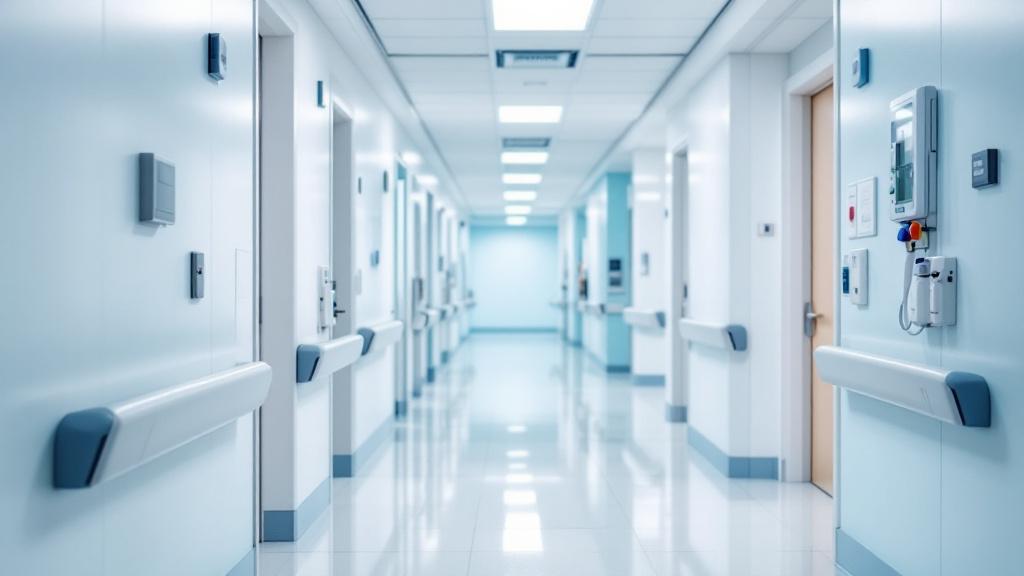What Are Medicaid Cards?
Crack the code of your Medicaid card! Discover the ins and outs, from decoding numbers to updating and using it effectively.

Medicaid Card Basics
Understanding the basics of a Medicaid card is essential for individuals who rely on Medicaid for their healthcare needs. In this section, we will explore what a Medicaid card is, why you need one, and how to obtain it.
What is a Medicaid Card?
A Medicaid card is an identification card issued to individuals who are eligible for Medicaid, a government-funded healthcare program that provides medical assistance to low-income individuals and families. The card serves as proof of your enrollment in the Medicaid program and allows you to access covered healthcare services.
Typically, a Medicaid card includes important information such as your name, unique identification number, and the name of your Medicaid program. The card may also display the logos of the state agency or managed care organization (MCO) that administers your Medicaid benefits.
Why Do You Need a Medicaid Card?
Having a Medicaid card is crucial for accessing healthcare services covered by the Medicaid program. When you visit healthcare facilities such as hospitals, doctors' offices, or pharmacies, you will be required to present your Medicaid card to verify your eligibility for Medicaid benefits.
Additionally, healthcare providers rely on the information provided on your Medicaid card to bill Medicaid for the services rendered. Without a valid Medicaid card, you may encounter difficulties in receiving the necessary medical care and services.
How to Obtain a Medicaid Card
To obtain a Medicaid card, you must first determine your eligibility for the Medicaid program. Eligibility criteria vary by state, but generally, Medicaid is available to individuals and families with limited income and resources. You can check your eligibility and apply for Medicaid through your state's Medicaid agency or through the Health Insurance Marketplace.
Once your eligibility is confirmed and your application is approved, you will receive a Medicaid card in the mail. The process and timeline for receiving your card may vary depending on your state and the Medicaid program you qualify for.
If you have lost your Medicaid card or need a replacement, refer to their article on lost Medicaid card replacement for guidance on obtaining a new card.
Understanding the basics of your Medicaid card is the first step in navigating the Medicaid program. In the following sections, we will delve deeper into the information and symbols on your Medicaid card, the different types of Medicaid cards available, and how to effectively use and manage your card.
Understanding the Medicaid Card
To fully understand your Medicaid card and its significance, it's important to familiarize yourself with the key information on the card and decode the numbers and symbols it contains.
Key Information on the Card
Your Medicaid card serves as proof of your enrollment in the Medicaid program and grants you access to a range of healthcare services. It typically includes the following key information:
- Name: Your full name is printed on the Medicaid card, ensuring proper identification during healthcare visits.
- Medicaid ID Number: This unique identification number is assigned to each Medicaid recipient. It is used to track your healthcare records and verify your eligibility for services.
- Effective Date: The effective date specifies when your Medicaid coverage begins.
- Expiration Date: The expiration date indicates when your current Medicaid coverage period ends. It's important to renew your Medicaid card before this date to avoid a lapse in coverage.
- Contact Information: Your Medicaid card may include contact information such as a helpline or customer service number. This information can be useful when you have questions or need assistance.
Decoding the Numbers and Symbols
The numbers and symbols on your Medicaid card may seem mysterious at first glance, but they contain important information about your coverage. Here's a breakdown of what they represent:
- State Code: Each state has a unique code that identifies its Medicaid program. This code helps healthcare providers verify your eligibility and process claims accurately.
- Category Code: The category code on your Medicaid card indicates the basis of your eligibility for Medicaid. It specifies the group you belong to, such as low-income adults, children, pregnant women, or individuals with disabilities.
- Plan Code: If you're enrolled in a specific managed care plan or a Medicare-Medicaid dual eligible program, the plan code on your Medicaid card will indicate the details of your coverage.
- Additional Symbols: Your Medicaid card may include additional symbols or icons that represent specific benefits or restrictions associated with your coverage. These symbols are used to provide quick reference information to healthcare providers.
Understanding the information and symbols on your Medicaid card is essential for smooth access to healthcare services.
In the next section, we will explore the different types of Medicaid cards available, including traditional Medicaid cards, Managed Care Organization (MCO) cards, and Medicare-Medicaid Dual Eligible cards.
Types of Medicaid Cards
When it comes to Medicaid cards, there are different types available based on your eligibility and coverage. Understanding the various types of Medicaid cards can help you navigate your healthcare benefits and access the services you need. Let's explore three common types of Medicaid cards: traditional Medicaid cards, Managed Care Organization (MCO) cards, and Medicare-Medicaid dual eligible cards.
Traditional Medicaid Cards
Traditional Medicaid cards are issued to individuals who qualify for Medicaid based on income and other eligibility criteria. These cards are typically provided to those enrolled in the fee-for-service Medicaid program. With a traditional Medicaid card, you have the freedom to choose your healthcare providers, including doctors, hospitals, and specialists who accept Medicaid.
To utilize your traditional Medicaid card, you will need to present it at healthcare facilities when receiving services. It's important to keep your card updated and carry it with you at all times to ensure a seamless experience when seeking medical care.
Managed Care Organization (MCO) Cards
For individuals enrolled in Medicaid managed care programs, they will receive an MCO card. Medicaid managed care programs involve partnering with specific healthcare organizations, such as insurance companies or health maintenance organizations (HMOs), that coordinate and manage your healthcare services.
MCO cards are typically issued to individuals who have chosen or been assigned to a specific managed care organization. These cards bear the name of the chosen organization and must be presented at healthcare facilities that are part of the MCO's network. It's important to familiarize yourself with the providers and services covered by your specific MCO, as outlined in your member handbook or plan materials.
Medicare-Medicaid Dual Eligible Cards
Medicare-Medicaid dual eligible individuals are those who qualify for both Medicare and Medicaid benefits. These individuals receive a special dual eligible card that combines both programs. The card will typically display the logos of both Medicare and Medicaid.
With a Medicare-Medicaid dual eligible card, you can access healthcare services covered by both programs, ensuring comprehensive coverage. It's essential to understand the benefits and coverage provided by each program and present your dual eligible card when seeking medical care.
By understanding the different types of Medicaid cards, you can navigate your healthcare benefits more effectively. Whether you have a traditional Medicaid card, an MCO card, or a Medicare-Medicaid dual eligible card, it's important to keep your card updated, understand your coverage, and present it when accessing medical services. For more information on Medicaid eligibility and requirements, refer to their article on Medicaid card eligibility.
Using Your Medicaid Card
Once you have your Medicaid card in hand, it's important to understand how to use it effectively. In this section, we will explore the key aspects of using your Medicaid card at healthcare facilities, important tips and reminders, as well as the process of updating and renewing your card.
Presenting Your Card at Healthcare Facilities
Your Medicaid card serves as proof of your eligibility for Medicaid benefits and coverage. When visiting healthcare facilities, it is essential to present your card to ensure that your healthcare provider is aware of your coverage. The card contains important information that providers need to properly bill Medicaid for the services you receive.
When presenting your Medicaid card, make sure to provide it to the front desk or admissions staff upon arrival. They will typically make a copy of your card for their records. It's important to keep your card in a safe and easily accessible place, such as your wallet or purse, to ensure you have it readily available when needed.
Important Tips and Reminders
When using your Medicaid card, it is crucial to keep the following tips and reminders in mind:
- Protect your card: Treat your Medicaid card like you would any important identification document. Keep it secure and avoid sharing it with others unless necessary.
- Keep your information up to date: If there are any changes to your personal information, such as your address or contact details, be sure to update this information with your Medicaid office. This ensures that your card remains valid and that you receive important communications regarding your coverage.
- Understand your benefits: Familiarize yourself with the benefits covered by your Medicaid program. It's important to know what services are included and any limitations or restrictions that may apply.
- Know your eligibility: Make sure you understand the eligibility requirements for your Medicaid program. This will help you stay informed about any changes that may affect your coverage.
Updating and Renewing Your Medicaid Card
It is crucial to keep your Medicaid card up to date to ensure that you receive uninterrupted coverage. If there are any changes to your personal information, such as a change in address or contact details, contact your Medicaid office to update your card. They will provide instructions on the necessary steps to update your information.
In addition to updating your information, it's important to renew your Medicaid card when it expires. Medicaid cards typically have an expiration date, and renewal processes vary by state. Contact your Medicaid office to obtain the necessary information and instructions for renewing your card.
By understanding how to effectively use your Medicaid card, following important tips and reminders, and keeping your information up to date, you can make the most of your Medicaid coverage and ensure that you receive the necessary healthcare services when needed.
FAQs
What do I do if I lose my Medicaid card?
Losing your Medicaid card can be concerning, but there are steps you can take to obtain a replacement. The process may vary depending on your state's Medicaid program. Generally, you can contact your local Medicaid office or the agency responsible for administering Medicaid in your state to request a replacement card. Some states may offer online options for requesting a replacement card.
How do I know which services are covered by my Medicaid program?
Understanding the services covered by your Medicaid program is crucial to ensure you receive appropriate care. Each state's Medicaid program has its own set of guidelines and coverage options. To determine the services covered by your Medicaid program, you can refer to the information provided by your state's Medicaid office or access the official Medicaid website for your state. They will typically provide a comprehensive list of covered services, including doctor visits, hospital care, prescription medications, preventive care, and more.
How long does it take to receive a Medicaid card?
Once your eligibility for Medicaid is determined, you should receive your Medicaid card within two to four weeks. If you do not receive your card within this time frame, you should contact your state's Medicaid agency.
Can I use my Medicaid card for dental and vision services?
In some states, Medicaid covers dental and vision services for adults, while in others, these services are only covered for children. It is important to check with your state's Medicaid agency to see what dental and vision services are covered.
What should I do if my personal information on my Medicaid card is incorrect?
If any of the personal information on your Medicaid card is incorrect, such as your name or date of birth, you should contact your state's Medicaid agency immediately to have it corrected. Using an incorrect ID number or personal information can result in denial of coverage.
Will my doctor know what services are covered by my Medicaid plan?
Most healthcare providers who accept Medicaid will be familiar with the services that are covered by the program. However, if you have specific questions about what services are covered under your plan, you can contact your state's Medicaid agency or review the materials provided by the agency when you enrolled in the program.
What should I do if I lose my Medicaid card?
If you lose your Medicaid card, you should contact your state's Medicaid agency immediately to request a replacement. In the meantime, many providers can verify eligibility through other means such as a social security number or driver’s license number.
Conclusion
In conclusion, Medicaid cards are an essential component of the Medicaid program. They provide proof of coverage for eligible individuals and families and allow them to access healthcare services. If you have any questions about your Medicaid card or the services that are covered by Medicaid, be sure to contact your state's Medicaid agency for more information. Remember to keep your Medicaid card with you at all times and report any changes to your personal information to ensure that you receive the healthcare services you need.
Sources
https://.gov/using-my-medicaid-member-card

How to Plan for Long-Term Home Care Services

How Home Team Helps Families Make Informed Care Decisions

How Home Team's Caregivers Provide Peace of Mind for Families



